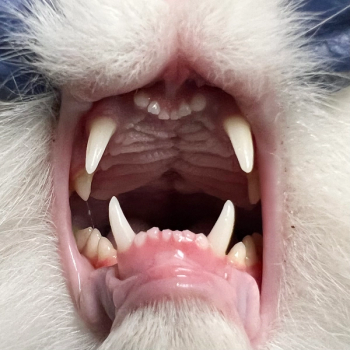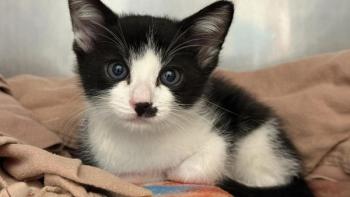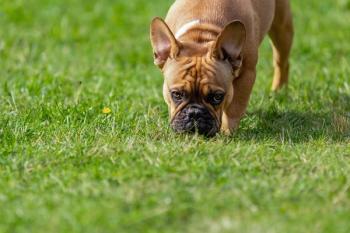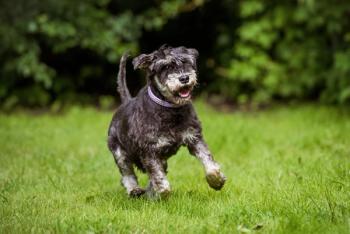
Treating fracture disease and nonunion fractures (Proceedings)
Average healing times for small animal fractures are dependent upon the age of the animal and the type of fracture as well as the method of fixation used to stabilize the fracture.
Average healing times for small animal fractures are dependent upon the age of the animal and the type of fracture as well as the method of fixation used to stabilize the fracture. Fractures adequately stabilized with an external skeletal fixator will in most cases heal more quickly than those stabilized with internal fixation such as a plate and screws.1 Delayed union refers to fractures that require longer than the average time to heal whereas nonunion fractures refer to fractures where all evidence of healing activity has stopped and the fragments are movable (generally greater than 3 months for both). Nonunion fractures will require surgery and adjunctive measures for healing to occur.
In general, fracture repair has become the domain of the gardener and not the carpenter. That is, anatomical reduction with rigid fixation increases healing time and can even prevent it, whereas leaving the fracture hematoma and fragments undisturbed (biological fixation) and stabilizing only the proximal and distal bone fragments reduces healing time markedly.2 This new foundation of repair must be remembered with delayed and nonunion fractures as well as with new fractures.
Delayed union fractures have evidence of ongoing osteogenic activity but a callus may not cross the fracture and a fracture line is still evident on radiographs. Delayed union fractures can be determined by the lack of sclerosis of bone at the fractured ends.1 Treatment of delayed unions depends upon whether or not there is rigid enough immobilization of the fracture at the present time. Implants that have become loosened or the patient has removed are no longer effective. Adding a splint or cast will not immobilize these fractures and allow healing to progress. If however, the original fixation method is still rigid and provides enough stability, one may only need to decrease the patient's activity for healing to occur. This may be accomplished through cage confinement or by using a nonweightbearing sling. I do not like to use nonweightbearing slings often and will not use them for longer than 2 weeks since contracture of tendons and ligaments can occur as well as bandage sores and infection. Do not use a splint or case in place of a nonweightbearing sling as they do not limit use of the limb sufficiently to provide increased stability for fracture healing. If the patient cannot be controlled and its activity limited or if the implants have loosened before healing has finished, augmentation of the original repair is required. Addition of an external fixator to a fractured bone that was repaired with an intramedullary pin and cerclage wire can provide the increased stability that is needed, especially in smaller patients that can be cage confined. Larger unruly animals may need internal fixation with a plate and screws for healing to proceed. If plate and screws were used originally but have loosened, the screws can be replaced with cancellous screws, reinserted with polymethylmethacrylate bone cement, or a new plate and screws placed. Use of a locking plate system or string of pearls system may provide the additional holding power to the screws to prevent loosening from recurring. It is best not to disturb the fracture site in delayed unions if possible to avoid disrupting the healing process therefore realignment with closed reduction and placement of an external fixator preferred over replacement of the plate and screws.1 If the fracture is opened autogenous bone graft with or without the addition of allogenic bone graft (Veterinary Transplant Services®) is definitely advocated.
Nonunion fractures are classified as viable or nonviable. Viable nonunions have the presence of reactive bone at the fracture ends but the ends are separated by cartilaginous and fibrous scar tissue that the reactive bone cannot bridge. The appearance of viable nonunions may be hypertrophic (elephant foot), moderately hypertrophic(horse hoof), or oligotrophic (no callus but no sclerosis of the bone ends).3 Nonviable nonunions are classified as dystrophic (sclerotic ends, radius/ulna fractures), necrotic (sequestrum), defect (gap>1.5xbone diameter), or atrophic (rounding of bone ends).3
Viable nonunions have an adequate blood supply to the fracture ends and therefore only require adequate apposition of the bone ends and stabilization of the fracture.4,5 If the ends of the bone have to be disrupted in these cases for adequate apposition, then placement of a bone graft either autogenous or allogenous is highly recommended following removal of cartilaginous and fibrous interpositional tissue.
Nonviable nonunions can present quite a problem since the bone is inactive and no stimulus to the bone is present for healing to occur. One method to revive nonviable fractures is to remove all necrotic or avascular interposing tissue, open up intramedullary canals in the fracture ends and stabilize the fracture in a buttress fashion such as with a bone plate and screws. In addition bone graft at the fracture site can stimulate osteogenic activity.1,4,5
Another technique is to resect the nonviable fracture ends en bloc thus shortening the bone in order to provide as much cortical contact between the bone ends in area of bone where there was no fracture before. In order to not shorten the bone greater than 20% of its original length a cortical gap of less than 45° of the circumference of bone can be left but autogenous or cancellous graft is then used to fill the hole. The transverse osteotomy site is stabilized with a dynamic compression plate and screws in compression in order to stimulate osteogenic activity.6
In cases of nonviable nonunion where loss of blood supply is due to a loss of soft tissue structures (as with degloving or gunshot injuries), muscle flaps have been used. In the hind limb, the semitendinosus muscle has been used in the repair of tibial fractures and in the forelimb, the fexor carpi ulnaris has been used to reconstruct the antebrachium.7,8 Mature myoblasts and not fibroblasts have the ability to redifferentiate into osteoblasts thus if a stimulus is present muscle can function to synthesize new bone.9,10 Use of muscle flaps would still require bone grafting, potentially multiple times to induce adequate neovascularization to severely traumatized bone.
Fresh autogenous cancellous bone graft is obtained most commonly from the proximal humerus, proximal tibia, and iliac crest in small animals. It provides to the fracture site with osteoconduction elements (scaffold), osteoinduction elements (growth factors), and osteogenesis elements (bone-producing cells).11
Frozen bone allograft is harvested from dogs that have been euthanized and is processed to render it non-immunogenic. Therefore, no osteogenic cells are present but only growth factors and scaffolding are left. The most effective use of these allografts is to mix them with autogenous cancellous graft to fill defects, but it may be used alone in place of a fresh graft. Demineralized bone matrix acts as a scaffolding only but can also be encorporated into a small amount of fresh cancellous bone to provide a much larger bone graft. Beta-tricalcium phosphate is a synthetic scaffolding that can be used successfully to fill bone defects in fractures after it is mixed with the patient's fresh whole blood. Healing time can be reduced with this affordable method of bone grafting.12 Osteoinductive products are also becoming available commercially. These include human recombinant osteogenic protein-1 and bone morphogenic protein-2 (BMP-2).11,13 BMP-2 in a nonglycosylated form was administered in a fibrin hydrogel to dogs and cats with nonhealing fractures greater than 3 months in duration. Healing occurred in all cases where the fracture ends were debrided of fibrous scar tissue. The fibrin hydrogel was required with nonglycosylated BMP-2 to prevent its absorption and removal from the fracture site in order to allow it to stimulate osteogenesis for 5 to 12 days.14
Finally, other methods of stimulating fracture healing to occur are under investigation. Therapeutic ultrasound administered once daily for 15 minutes six times a week stimulates fracture gap filling and healing times can be reduced up to one month in experimental dog models (ulna ostectomy).15 Laser therapy has gained some interest recently in stimulating bone healing. While there are no published reports of its use clinically in small animals, experimental animals can have some response with decreased healing times.16 Laser is suspected to improve bone healing by stimulating osteoblasts and progenitor cells such as mesenchymal cells in the fracture, which means that in nonunions the surgeon must first get cells into the fracture site for laser to be effective.
We already know that the best way to treat a delayed or nonunion fracture is to avoid its development by providing effective and long lasting stability at the fracture site, using biological fracture fixation and disturbing the fracture hematoma as little as possible, while avoiding infection and large fracture gaps; however, these problems can still occur. Approaches to these chronic fractures are many and which you choose will depend upon the particular case you have and the circumstances of the owner, but at least there are methods to pursue other than amputation to stimulate fracture healing in problematic cases.
References
1. Piermattei DL, Flo GL, DeCamp CE. Brinker, Piermattei and Flo's Handbook of Small Animal Orthopedics and Fracture Repair. Fourth ed. St. Louis, Missouri: Saunders Elsevier Inc., 2006.
2. Perren SM. Basic aspects of internal fixation In: Allgower M, ed. Manual of internal fixation: techniques recommended by the AO-ASIF group. 3rd ed. Berlin: Springer-Verlag, 1991;2.
3. Weber BG, Cech D. Pseudoarthrosis: pathology, biomechanics, therapy, results. Bern: Hans Huber Medical Publisher, 1976.
4. Betts CW. Malunion, delayed union, and nonunion. In: Olmstead ML, ed. Small Animal Orthopedics. St Louis, MO: Mosby, 1995;277-291.
5. Kaderly RE. Delayed union, nonunion and malunion In: Slatter D, ed. Textbook of Small Animal Surgery. Second ed. Philadelphia, PA: Saunders, 1993;1676-1685.
6. Blaeser LL, Gallagher JG, Boudrieau RJ. Treatment of Biologically inactive nonunions by a limited en bloc ostectomy and compression plate fixation: a review of 17 cases. Vet Surg 2003;32:91-100.
7. Puerto DA, Aronson LR. Use of a semitendinosus myocutaneous flap for soft-tissue reconstruction of a grade IIIB open tibial fracture in a dog. Vet Surg 2004;33:629-635.
8. Chambers JN, Purinton PT, Allen SW, et al. Flexor carpi ulnaris (humeral head) muscle flap for reconstruction of distal forelimb injuries in two dogs. Vet Surg 1998;27:342-347.
9. Katagiri T, Yamaguchi A, Ikeda T, et al. The non-osteogenic mouse pluripotent cell line, C3H10T1/2, is induced to differentiate into osteoblastic cells by recombinant human bone morphogenetic protein-2. Biochem Biophys Res Commun 1990;172:295-299.
10. Yamaguchi A, Katagiri T, Ikeda T, et al. Recombinant human bone morphogenetic protein-2 stimulates osteoblastic maturation and inhibits myogenic differentiation in vitro. J Cell Biol 1991;113:681-687.
11. Vaccaro AR. The role of the osteoconductive scaffold in synthetic bone graft. Orthopedics 2002;25:s571-578.
12. Franch J, Diaz-Bertrana C, Lafuente P, et al. Beta-tricalcium phosphate as a synthetic cancellous bone graft in veterinary orthopaedics: a retrospective study of 13 clinical cases. Vet Comp Orthop Traumatol 2006;19:196-204.
13. Kelly EB. New frontiers in bone grafting. Orthopedic Technology Review 2000;2:28-35.
14. Schmokel HG, Weber FE, Seiler G, et al. Treatment of nonunions with nonglycosylated recombinant human bone morphogenetic protein-2 delivered from a fibrin matrix. Vet Surg 2004;33:112-118.
15. Yang KH, Park SJ. Stimulation of fracture healing in a canine ulna full-defect model by low-intensity pulsed ultrasound. Yonsei Med J 2001;42:503-508.
16. Tuner J, Hode L. The Laser Therapy Handbook. Grangesberg, Sweden: Prima Books AB, 2004.
Newsletter
From exam room tips to practice management insights, get trusted veterinary news delivered straight to your inbox—subscribe to dvm360.






